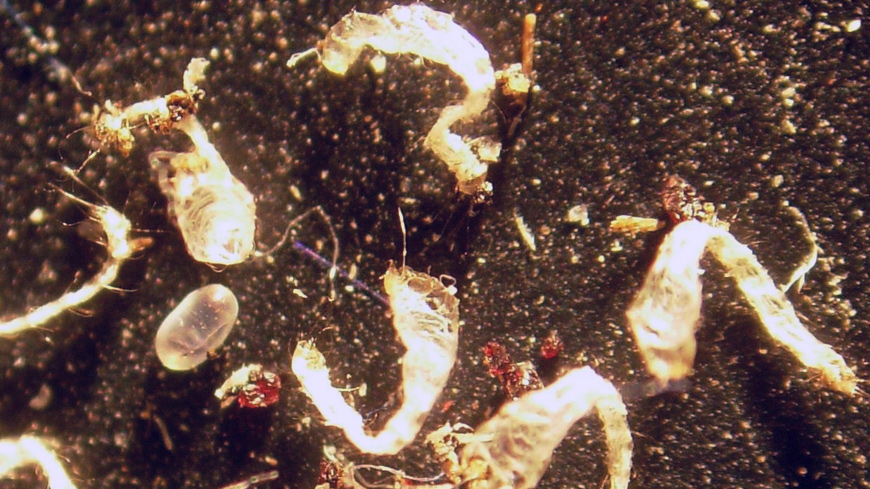Summary
Adult fleas don’t shed their skin. However, the larval stage does. Flea larvae molt a total of four times. Two molts are completed between instars, and two molts are completed during pupation.
Details
Only Flea Larvae Molt
Molts Between Instars
Flea larvae develop through three stages. Corresponding with the stages, the larvae are called 1st, 2nd, or 3rd instars. For instance, newly hatched larvae are first instars. Each instar grows progressively larger than the last.

Img 1 Shed flea larvae casings (exuviae) from previous moults found in the environment.
Larvae are encased in an external cuticle (skin) that locks them into a fixed size. In order to grow, the larvae must shed the outer cuticle. This ecdysis (moulting) process occurs once between each stage—twice total. The old larval casings (exuviae) get left behind in the environment Img 1.
Pupal Molts
Mature third instar larvae spin cocoons. They pupate within the silk structures. During the pupation process, two more molts are completed before an adult flea emerges.
Adult Fleas don’t Molt or Grow
Adult fleas don’t molt, and thus they can’t grow. However, their abdomens are capable expanding while consuming a blood meal. Abdominal segments initially overlap, but they spread out during feeding to accommodate for volumes of blood. Engorged fleas are double their unfed size. They reach their maximum weight within 48 hours of feeding. Females grow substantially more than males.
Flea Debris Causes Allergies
Flea debris will accumulate within an infested home. This includes live and dead fleas, eggs, larvae, larval casings, and feces. When kicked up into the air, the detritus becomes part of household dust. The dust can trigger respiratory allergies or asthma, as flea debris contains allergens distinct from the antigens which cause bite reactions.




You must log in to post a comment. Log in now.